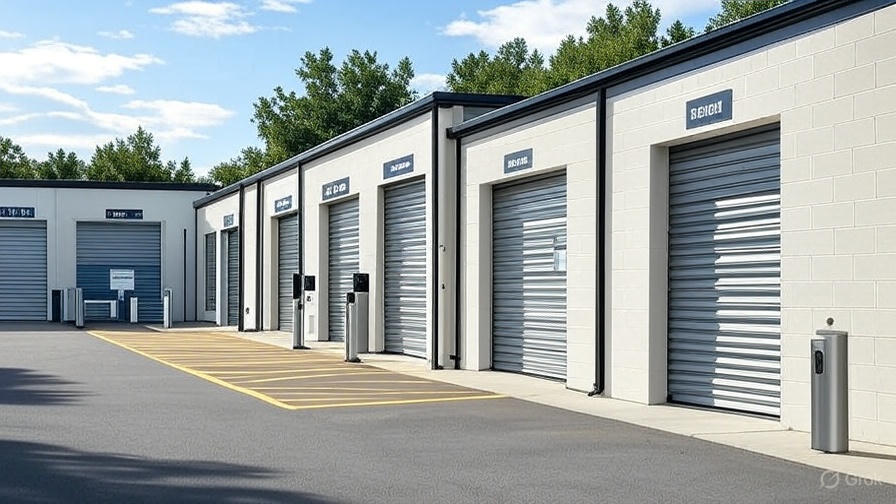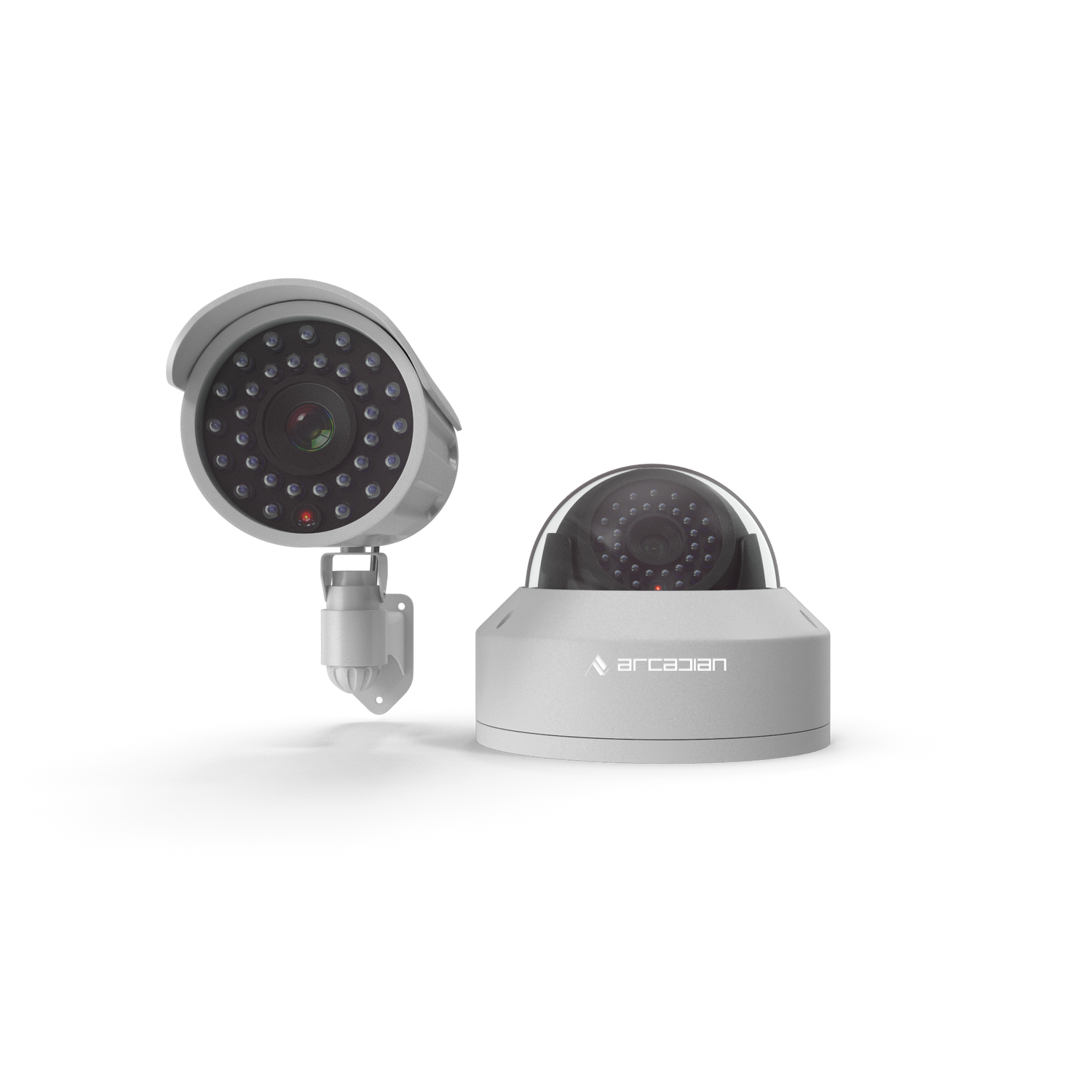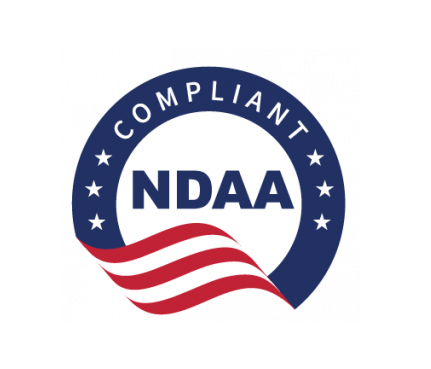The 2025 Self‑Storage Security Playbook: Executive Strategy for Lower Risk, Lower OpEx, Higher NOI
Self‑storage is stable—but threat patterns aren’t. This executive‑grade playbook flips common assumptions, shows how adaptive AI outperforms static CCTV and basic VMS, and gives you a practical path to higher NOI with lower loss and liability.

- Introduction
- Quick Summary / Key Takeaways
- Background & Relevance (Why this matters now)
- Core Topic Exploration
- Comparisons & Use Cases
- Implementation Guide (90‑Day Plan)
- ROI Model (Executive Lens)
- Policy, Legal & Reputation
- Common Questions (FAQ)
- Conclusion & CTA
- Internal Links (Suggested Anchors)
- External Sources (Selected)
- Security Glossary (2025 Edition)
Introduction
Self‑storage is big, stable, and increasingly tech‑driven—but risk hasn’t stood still. U.S. occupancy at stabilized facilities sat around 85% as of July 2024, even after a post‑pandemic normalization—proof that demand persists while margins tighten and expectations rise. (Sparefoot) ArcadianAI exists for this exact moment: we turn your existing cameras into proactive, AI‑powered sentries, with Ranger, our cloud‑native assistant, filtering noise, detecting real threats (tailgating, cut‑locks, after‑hours loitering), and guiding staff to act fast. Static “good‑enough” setups—traditional NVRs or single‑vendor VSaaS like Verkada—often treat every site as identical. But your risk is hyper‑local: tenancy mix, neighborhood crime, lighting geometry, and even driveway approach lines vary site by site. This post uses reverse thinking—what your board, lenders, and insurers actually want to see—to build a self‑storage security program that raises NOI, not just more camera count.
Quick Summary / Key Takeaways
-
Security isn’t cost; it’s an NOI lever.
-
Treat each facility as a unique risk profile.
-
AI must reduce false alarms, not add dashboards. (Security Magazine, marchnetworks.com)
-
Insurer‑credible controls cut losses and premiums. (Crowe)
-
NDAA‑compliant, camera‑agnostic choices future‑proof assets. (SCW Security)
Background & Relevance (Why this matters now)
-
Scale & exposure: The U.S. has ~52,300 self‑storage facilities, with outsized concentration by state (e.g., Texas). That scale compounds liability if your portfolio uses one flat standard. (Neighbor)
-
Demand is steady; expectations are higher: Stabilized occupancy near the mid‑80s% underscores steady demand, but consumer expectations (24/7 access, contactless entry, visible security) have risen—placing pressure on operators to modernize without ballooning OpEx. (Sparefoot, Storable)
-
Security incidents are under‑counted: Many storage thefts are logged under the FBI UCR “hotel rule,” collapsing multiple unit burglaries into a single offense—masking true frequency and loss. Executive takeaway: assume the reported number is lower than your real risk. (Modern Storage Media)
Core Topic Exploration
What Executives Usually Get Wrong (Reverse Thinking)
Common assumption: “More cameras = more security.”
Reverse: More relevance beats more resolution. You need fewer false positives and faster classification—humans respond to ranked, verified alerts, not hour‑long timelines. AI that improves signal‑to‑noise drives outcomes: fewer write‑offs, faster police response, and better tenant sentiment. (Security Magazine, marchnetworks.com)
Common assumption: “Standardize everything across sites.”
Reverse: Standardize the platform, not the policy. Your software should adapt to each property’s crime pressure and layout—loading bays, blind corridors, keypad islands, dumpster enclosures, RV lanes—while preserving corporate governance and audit trails.
Common assumption: “Security spend is a sunk cost.”
Reverse: Treat it like an NOI project. With high single‑digit cap rates, every $1 in loss avoided or OpEx saved can add ~$17–$20 of asset value (illustrative). Your board wants that math, not megapixel counts. (Cap rate context for self‑storage ~5.9% in 2024.) (Storable)
Threat Model for Self‑Storage (2025)
-
Opportunistic theft & tailgating: After‑hours vehicles slipstreaming behind authorized tenants; loiterers probing door rows; “walk‑through” scouting during daylight. AI should flag tailgate sequences, linger time, and repeated code use anomalies. Real cases show sophisticated actors using valid codes harvested from victims. (Stamford Advocate)
-
Cut‑locks & unit‑to‑unit burglary: Look for tool‑in‑hand cues, posture, and micro‑motions; cross‑camera stitching reduces blind‑row escapes.
-
Perimeter breaches: Fence climbs near corners/ditch lines; thermal or low‑light detection helps wide‑lot coverage.
-
Arson & fire spread: Warehouses and storage occupancies can see catastrophic losses when combustibles fuel rapid spread—make early detection + quick escalation non‑negotiable. (NFPA, Zurich North America)
-
Cyber‑physical exposure: Keypad controllers, Wi‑Fi locks, websites, and tenant portals create a blended risk. Executives and underwriters now treat cyber hygiene as part of premises security. (Munich Re)
What Tenants Actually Notice (and What Insurers Reward)
-
Visible, modern controls (clean lighting, LPR at entries, AI‑verified alerts) change tenant perception and reviews; Storable’s market content points to security & access as top priorities for 2024 buyers. (Storable)
-
Documented escalation playbooks and automated alert packages (clip, time, camera, plate, code used) win goodwill with law enforcement and insurers during claims. P&C carriers emphasize proactive, specific risk control over “general vigilance.” (Crowe, Travelers)
Compliance & Procurement (NDAA, Governance, and “Future‑Proof”)
-
For U.S. portfolios, NDAA compliance (avoiding banned manufacturers and certain OEMs) is table stakes for federal work and many institutional buyers; several states and critical‑infrastructure owners mirror this posture. Choose platforms that are camera‑agnostic and NDAA‑friendly to avoid stranded CAPEX. (SCW Security, TIME)
How ArcadianAI + Ranger Solves Storage‑Specific Pain Points
-
Tailgating & linger‑time AI: Ranger detects vehicle/person tailgate chains, slow‑roll scouting, and after‑hours dwell, escalating only when intent patterns stack—cutting noise while catching real behavior. (Security Magazine)
-
Cut‑lock / tool‑in‑hand cues: Computer vision tuned for storage rows (narrow corridors, roll‑up doors) flags risky postures instead of relying on crude motion zones.
-
License Plate + Access Correlation: Bring your existing LPR feeds and keypad logs; Ranger associates plates ↔ codes ↔ time windows, creating searchable evidence packages that speed arrests and recoveries, as seen in recent multi‑unit theft investigations. (Stamford Advocate)
-
Fire & life‑safety assist: Early smoke/flame heuristics plus context‑aware escalation (e.g., sprinkler flow alarms, heat signatures after hours) improve time‑to‑action on low‑probability/high‑severity events. (NFPA)
-
Camera‑agnostic + cloud‑native: Keep Axis, Hanwha, Bosch—no forklift refresh. Our cloud reduces brittle on‑prem NVR points of failure and enables cross‑site analytics.
-
False‑alarm reduction: Ranger’s multi‑signal logic lowers nuisance alarms so staff respond to fewer, richer alerts—exactly what AI is for. (marchnetworks.com)

Comparisons & Use Cases
Executive Comparison Table (Storage Context)
| Capability | ArcadianAI (Ranger) | Traditional NVR | Legacy VMS (Genetec/Milestone) | VSaaS Appliance (Verkada, Rhombus, Eagle Eye) |
|---|---|---|---|---|
| Camera strategy | Agnostic (reuse most IP cams) | Locked to on‑prem recorder | Broad, but complex to tune | Often best with same‑vendor cams |
| False‑alarm handling | Multi‑signal AI, ranked alerts | Motion events/fixed rules | Rules + basic analytics | Varying AI, often per‑camera |
| Tailgating/linger detection tuned for rows | Yes (storage‑specific) | No | Requires custom config | Limited per site geometry |
| Cross‑site analytics & search | Native | No | With add‑ons | Partial |
| NDAA posture | Platform‑agnostic; NDAA‑friendly | Depends on cams | Depends on cams | Varies by vendor/cam |
| Evidence packages (clip/plate/code) | Auto‑assembled | Manual pull | Manual workflows | Mixed |
| OpEx impact | Lower guard dispatch, fewer false calls | Staff triage heavy | Staff triage heavy | Mixed |
| ROI lens (NOI + cap rate) | Designed for exec metrics | Device‑centric | Control‑room centric | Device‑centric |
(Brand names are illustrative; capabilities vary by SKU and deployment.)
Sample Storage Use Cases
-
24/7 Access Sites: Ranger filters after‑hours loitering at keypad islands and flags suspicious dwell near door rows; integrates with LPR and access logs for rapid resolution.
-
RV/Boat Lanes: Large‑vehicle tailgate patterns detected at wider gates; alerts packaged for guard/mobile patrol.
-
Urban Infill Facilities: More foot traffic and ride‑ups; Ranger tightens people‑only detection and alerts on bag/tool carry signatures.
-
Portfolio Ops: HQ views cross‑site anomalies (repeat plates, code misuse), benchmarking sites by incident rate per 1,000 access events for data‑driven capex.
Implementation Guide (90‑Day Plan)
Phase 1 (Weeks 0‑3): Baseline & Risk Map
-
Pull 12 months of incidents/claims; classify by cause, zone, and time‑of‑day.
-
NDAA audit of installed cameras; map blind spots; confirm retention policy. (SCW Security)
Phase 2 (Weeks 4‑6): Pilot With Intent
-
Choose two contrasting sites (urban infill vs. highway RV) to prove adaptability.
-
Configure Ranger’s linger, tailgate, and after‑hours policies to each geometry.
Phase 3 (Weeks 7‑12): Scale and Insurer Alignment
-
Publish a Security Playbook (alert tiers, escalation, law‑enforcement contact cards).
-
Share before/after metrics (false alarms ↓, response time ↓) with broker/carrier to pursue credits or favorable deductibles. (Crowe)
ROI Model (Executive Lens)
-
Loss avoided: If theft claims drop by $50k/year portfolio‑wide and false dispatches fall by 30%, at a 5.9% cap rate that can imply ~$847k in asset value preservation—before considering brand/review impact and tenant retention. (Storable)
-
OpEx shift: Ranger centralizes triage so your managers spend less time scrubbing footage and more time on occupancy and ancillary revenue.
Policy, Legal & Reputation
-
Documentation wins: When an incident occurs, clip‑level evidence + plate + access code drives faster police action (see 2024 Stamford case where surveillance tied suspects to code usage across units). (Stamford Advocate)
-
Fire and Cat Risk: Align your detection + response with NFPA and local fire authorities; catastrophic warehouse/storage fires show why early detection and escalation matter. (NFPA)
Common Questions (FAQ)
Do cameras really reduce insurance premiums?
They can when paired with documented procedures and verifiable incident reduction (fewer claims, faster response). Carriers reward specific risk controls and evidence trails. (Crowe)
What’s the fastest way to cut theft right now?
Automate tailgating and linger alerts at gates/rows and correlate with access codes and plates; escalate only on stacked intent to avoid alarm fatigue. (marchnetworks.com)
Is NDAA compliance relevant if we’re private?
Yes. Many institutional lenders/partners and public‑sector adjacent clients require it. It also avoids future retrofit risk. (SCW Security)
How many cameras do we need?
Start with coverage relevance (keypad, entry lanes, perimeter corners, long rows) and cross‑camera stitching. Add only where detection confidence needs it.
Does AI work at night or in rain?
Ranger fuses multiple cues and learns site patterns; low‑light performance depends on lens/IR/lighting, but AI reduces noise vs. simple motion analytics. (Security Magazine)
Conclusion & CTA
Security for self‑storage isn’t about piling on cameras; it’s about adapting to each property’s real risk while proving value to boards, lenders, and insurers. ArcadianAI’s Ranger turns your existing footprint into a proactive, evidence‑driven security layer that reduces loss, lowers OpEx, and protects NOI—portfolio‑wide.
See ArcadianAI in Action →
Get a Demo →
Get Your Personalized ROI Report →
Internal Links (Suggested Anchors)
-
ArcadianAI Ranger for Self‑Storage
-
Adaptive AI vs. Legacy NVRs: A Buyer’s Guide
-
False‑Alarm Reduction Playbook for Storage Portfolios
-
NDAA‑Compliant Camera Planning Checklist
-
Security Ops KPIs: NOI‑First Metrics for Self‑Storage
External Sources (Selected)
-
SpareFoot: U.S. occupancy trends, July 2024. (Sparefoot)
-
Neighbor: U.S. facility count. (Neighbor)
-
Modern Storage Media: UCR “hotel rule” undercounting theft. (Modern Storage Media)
-
Security Magazine: AI reduces false alarms, enables proactive measures. (Security Magazine)
-
March Networks: Business impacts of reducing false positives. (marchnetworks.com)
-
NFPA Warehouse Fire Report (risk context). (NFPA)
-
NDAA compliance overview (ban context). (SCW Security)
-
Storable resources: customer priority on security; tenant insights. (Storable, info.storable.com)
-
P&C market stress emphasizes targeted controls. (Crowe)
-
Case example: 2024 Stamford multi‑unit theft and code misuse. (Stamford Advocate)
Security Glossary (2025 Edition)
Access Control (Keypad/Smart Entry) — Systems that authorize and log tenant and staff entry, often via PINs, cards, or mobile credentials; critical for correlating events with video.
AI Alerts — Automated, intent‑aware notifications triggered by patterns like tailgating, linger‑time, or tool‑in‑hand, designed to minimize false positives.
ANPR / LPR (Automatic Number/License Plate Recognition) — Computer vision that reads plates at gates to associate vehicles with tenants and incidents.
Camera‑Agnostic — A platform (like ArcadianAI) that supports a wide range of IP cameras, reducing vendor lock‑in and enabling NDAA‑friendly upgrades.
False Alarm Reduction — Techniques that cut nuisance alerts so staff focus on verified threats; a key AI outcome tied to OpEx and response quality. (marchnetworks.com)
Hotel Rule (UCR) — FBI reporting rule that can consolidate multiple burglaries under one offense in multi‑unit properties (e.g., storage), under‑counting events. (Modern Storage Media)
NDAA Compliance — U.S. federal restrictions on specific surveillance manufacturers and OEMs; increasingly required by institutional owners and lenders. (SCW Security)
NOI (Net Operating Income) — Income minus operating expenses; security investments that reduce claims and labor can increase asset value via cap‑rate math. (Storable)
Perimeter Analytics — AI detection for fence climbs, corner breaches, and alley approaches that typical motion grids miss.
Ranger (ArcadianAI) — Cloud‑native assistant that turns existing cameras into proactive guards, packaging clip + plate + access code for rapid action.
Tailgating (Gate) — Unauthorized entry by following an authorized vehicle; high‑impact risk for 24/7 access sites.
Tenant Sentiment — Perceived safety and convenience that affect reviews, occupancy, and price tolerance; strengthened by visible, modern security. (Storable)
Thermal / Low‑Light Analytics — Sensors and AI tuned for dark lots and long lanes, improving detection when standard IR is insufficient.
VSaaS (Video Surveillance as a Service) — Cloud video platforms that bundle storage/analytics; often paired with specific cameras or appliances.
VMS (Video Management System) — Software to view and record cameras; may require extensive rule‑tuning to approach AI‑level signal quality.
Write‑Off (Security Loss) — Inventory or claims cost accepted as unrecoverable; prime target for executive‑level ROI from AI‑driven prevention.

Security is like insurance—until you need it, you don’t think about it.
But when something goes wrong? Break-ins, theft, liability claims—suddenly, it’s all you think about.
ArcadianAI upgrades your security to the AI era—no new hardware, no sky-high costs, just smart protection that works.
→ Stop security incidents before they happen
→ Cut security costs without cutting corners
→ Run your business without the worry
Because the best security isn’t reactive—it’s proactive.







